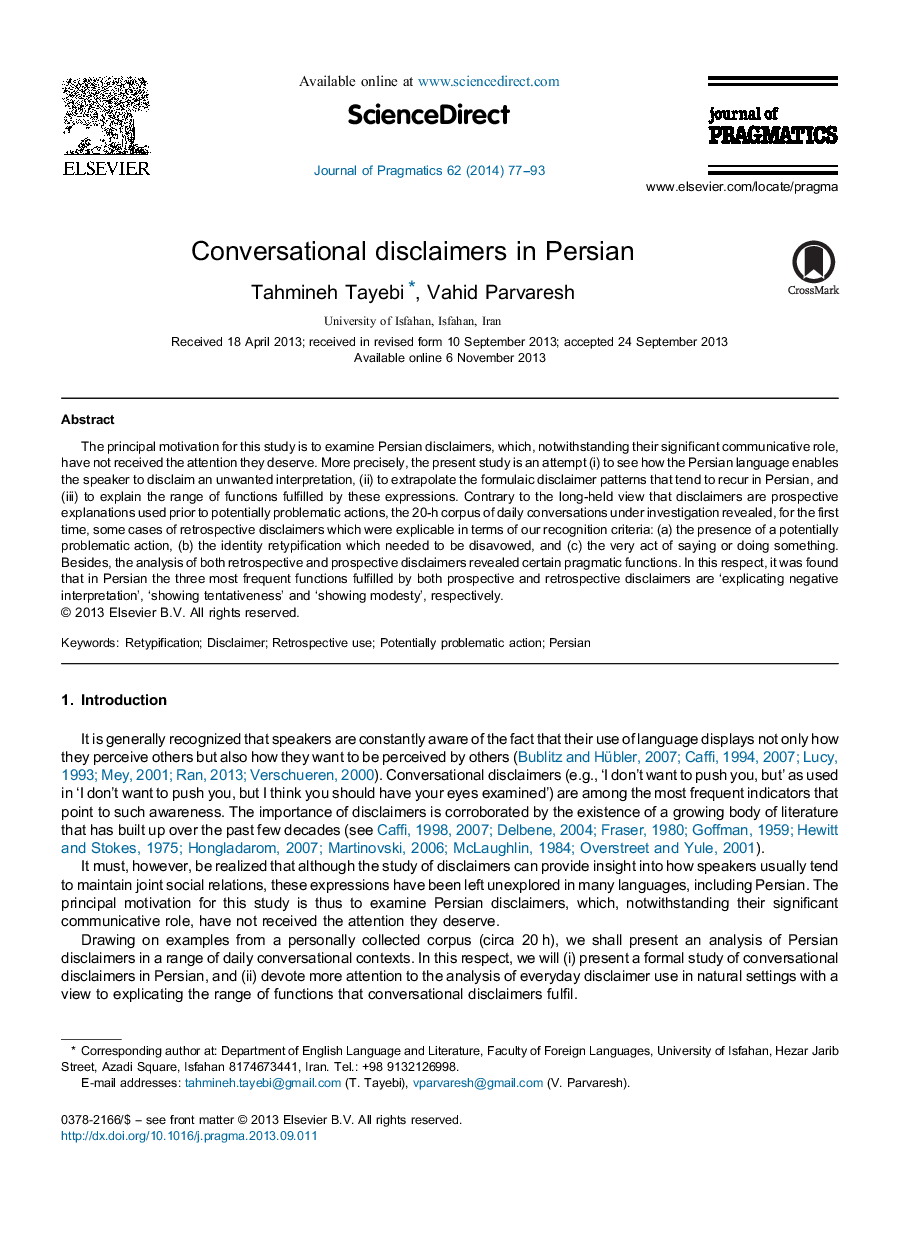| Article ID | Journal | Published Year | Pages | File Type |
|---|---|---|---|---|
| 932765 | Journal of Pragmatics | 2014 | 17 Pages |
•The present study reveals some cases of retrospective disclaimers.•The two most frequent functions are ‘explicating negative interpretation’ and ‘showing tentativeness’, respectively.•Disclaimers can at times convey a more critical attitude.•The study revealed a highly culture-specific function of expressing modesty.
The principal motivation for this study is to examine Persian disclaimers, which, notwithstanding their significant communicative role, have not received the attention they deserve. More precisely, the present study is an attempt (i) to see how the Persian language enables the speaker to disclaim an unwanted interpretation, (ii) to extrapolate the formulaic disclaimer patterns that tend to recur in Persian, and (iii) to explain the range of functions fulfilled by these expressions. Contrary to the long-held view that disclaimers are prospective explanations used prior to potentially problematic actions, the 20-h corpus of daily conversations under investigation revealed, for the first time, some cases of retrospective disclaimers which were explicable in terms of our recognition criteria: (a) the presence of a potentially problematic action, (b) the identity retypification which needed to be disavowed, and (c) the very act of saying or doing something. Besides, the analysis of both retrospective and prospective disclaimers revealed certain pragmatic functions. In this respect, it was found that in Persian the three most frequent functions fulfilled by both prospective and retrospective disclaimers are ‘explicating negative interpretation’, ‘showing tentativeness’ and ‘showing modesty’, respectively.
